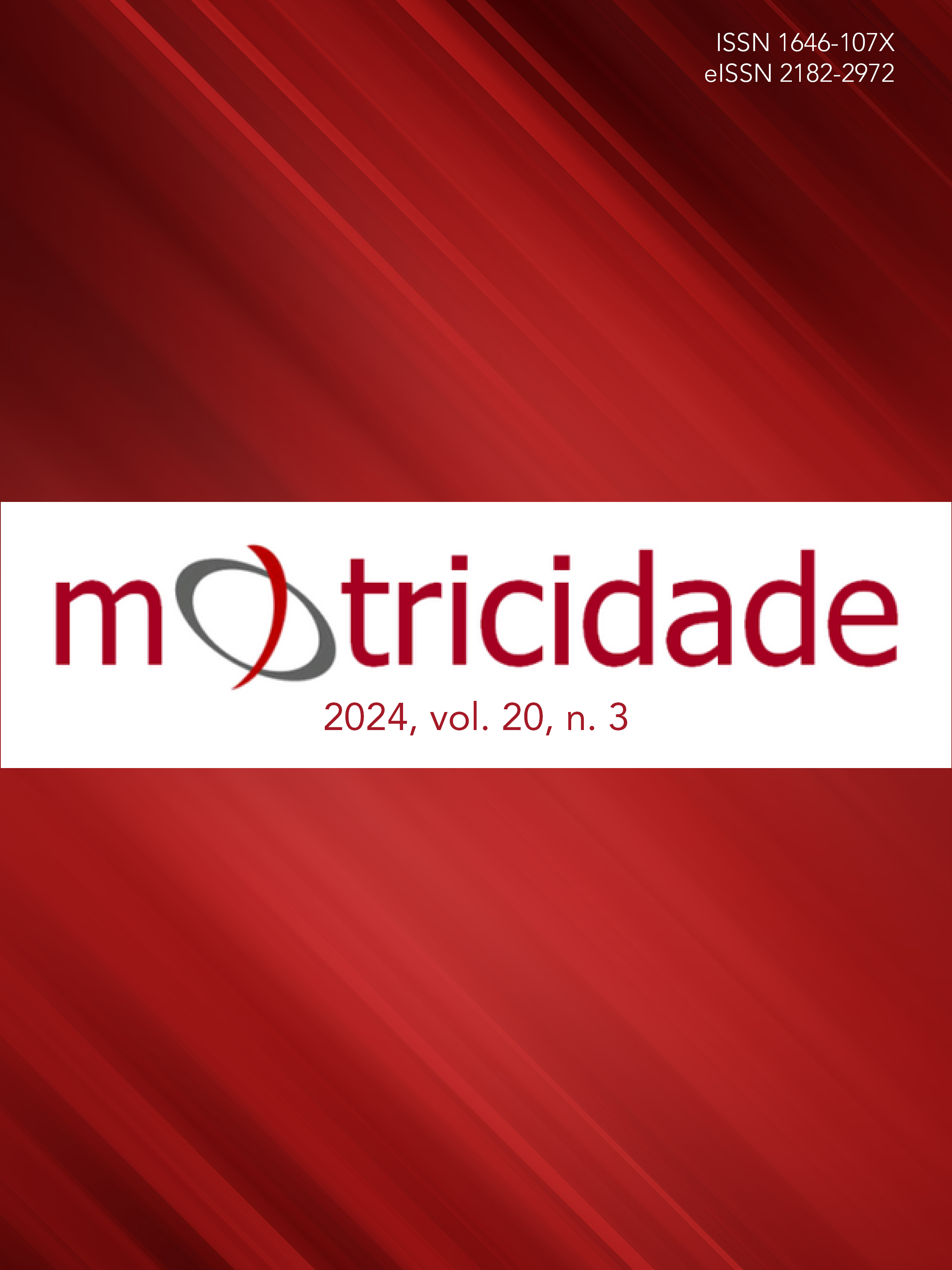Correlation between lower limb asymmetry and performance in professional female soccer players
DOI:
https://doi.org/10.6063/motricidade.36154Keywords:
isokinetic peak torque, speed of change of direction, speed, soccer, performanceAbstract
The structure of a soccer match is predominantly intermittent, characterised by synchronised and concomitant execution of low and high-intensity actions at different moments of the game, such as jumping, performing successive sprints and change of direction (COD). Furthermore, the repetition of such actions can contribute to the development of lower limb strength asymmetry. The objective of the present study was to investigate the relationship between lower limb asymmetry on peak concentric torque (PTCON) of the hamstrings and quadriceps muscles at 60°/s with performance in the 20-meter sprint, repeated anaerobic sprint test (RAST) and change of direction test (COD) in professional female soccer players. The sample consisted of twenty-two professional female soccer players from a first-division club in Brazilian football. Two visits were carried out with an interval of 48 hours between them. In addition, a value of p < 0.05 was adopted for statistical significance. The results showed no significant correlations between limb asymmetry in quadriceps PTCON, time and speed in the 20-meter sprint, time and velocity in the COD test, and total time in the RAST. Furthermore, no significant correlations were observed between limb asymmetry in hamstring PTCON, time and speed in the 20-meter sprint, time and velocity in the COD test, and total time in the RAST. Asymmetry in lower limb strength may not influence physical performance in sprints and COD tasks such as those adopted in the present study.
Downloads
Published
Issue
Section
License
The authors of submitted manuscripts must transfer the full copyright to Journal Motricidade / Sílabas Didáticas Editions. Granting copyright permission allows the publication and dissemination of the article in printed or electronic formats, and copyrights start at the moment the manuscript is accepted for publication. It also allows Journal Motricidade to use and commercialise the article in terms of licensing, lending or selling its content to indexation/abstracts databases and other entities.
According to the terms of the Creative Commons licence, authors may reproduce a reasonable number of copies for personal or professional purposes, but without any economic gain. SHERPA/RoMEO allows authors to post a final digital copy (post-printing version) of the article on their websites or on their institutions' scientific repository.


